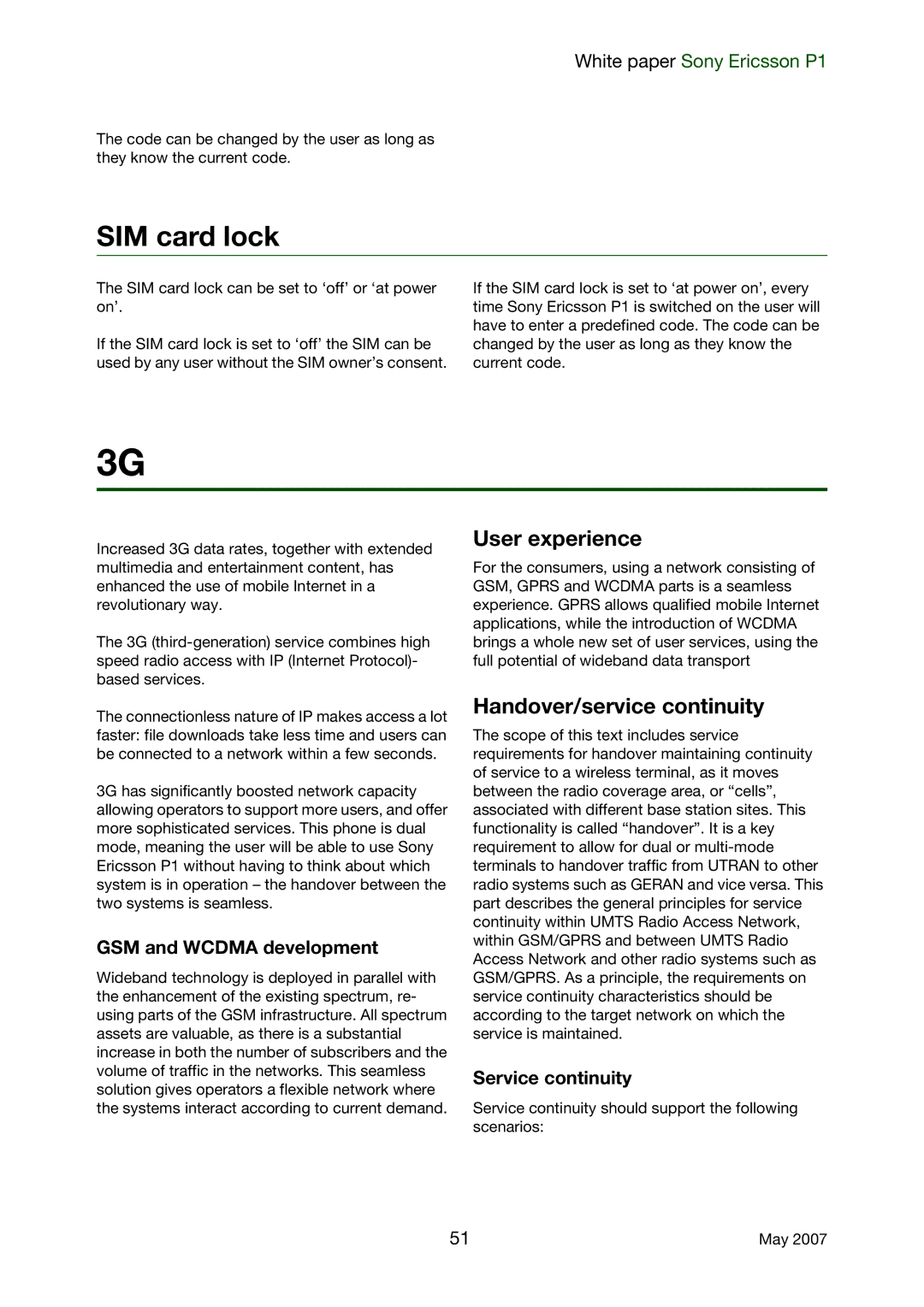
White paper Sony Ericsson P1
The code can be changed by the user as long as they know the current code.
SIM card lock
The SIM card lock can be set to ‘off’ or ‘at power on’.
If the SIM card lock is set to ‘off’ the SIM can be used by any user without the SIM owner’s consent.
If the SIM card lock is set to ‘at power on’, every time Sony Ericsson P1 is switched on the user will have to enter a predefined code. The code can be changed by the user as long as they know the current code.
3G
Increased 3G data rates, together with extended multimedia and entertainment content, has enhanced the use of mobile Internet in a revolutionary way.
The 3G
The connectionless nature of IP makes access a lot faster: file downloads take less time and users can be connected to a network within a few seconds.
3G has significantly boosted network capacity allowing operators to support more users, and offer more sophisticated services. This phone is dual mode, meaning the user will be able to use Sony Ericsson P1 without having to think about which system is in operation – the handover between the two systems is seamless.
GSM and WCDMA development
Wideband technology is deployed in parallel with the enhancement of the existing spectrum, re- using parts of the GSM infrastructure. All spectrum assets are valuable, as there is a substantial increase in both the number of subscribers and the volume of traffic in the networks. This seamless solution gives operators a flexible network where the systems interact according to current demand.
User experience
For the consumers, using a network consisting of GSM, GPRS and WCDMA parts is a seamless experience. GPRS allows qualified mobile Internet applications, while the introduction of WCDMA brings a whole new set of user services, using the full potential of wideband data transport
Handover/service continuity
The scope of this text includes service requirements for handover maintaining continuity of service to a wireless terminal, as it moves between the radio coverage area, or “cells”, associated with different base station sites. This functionality is called “handover”. It is a key requirement to allow for dual or
Service continuity
Service continuity should support the following scenarios:
51 | May 2007 |
